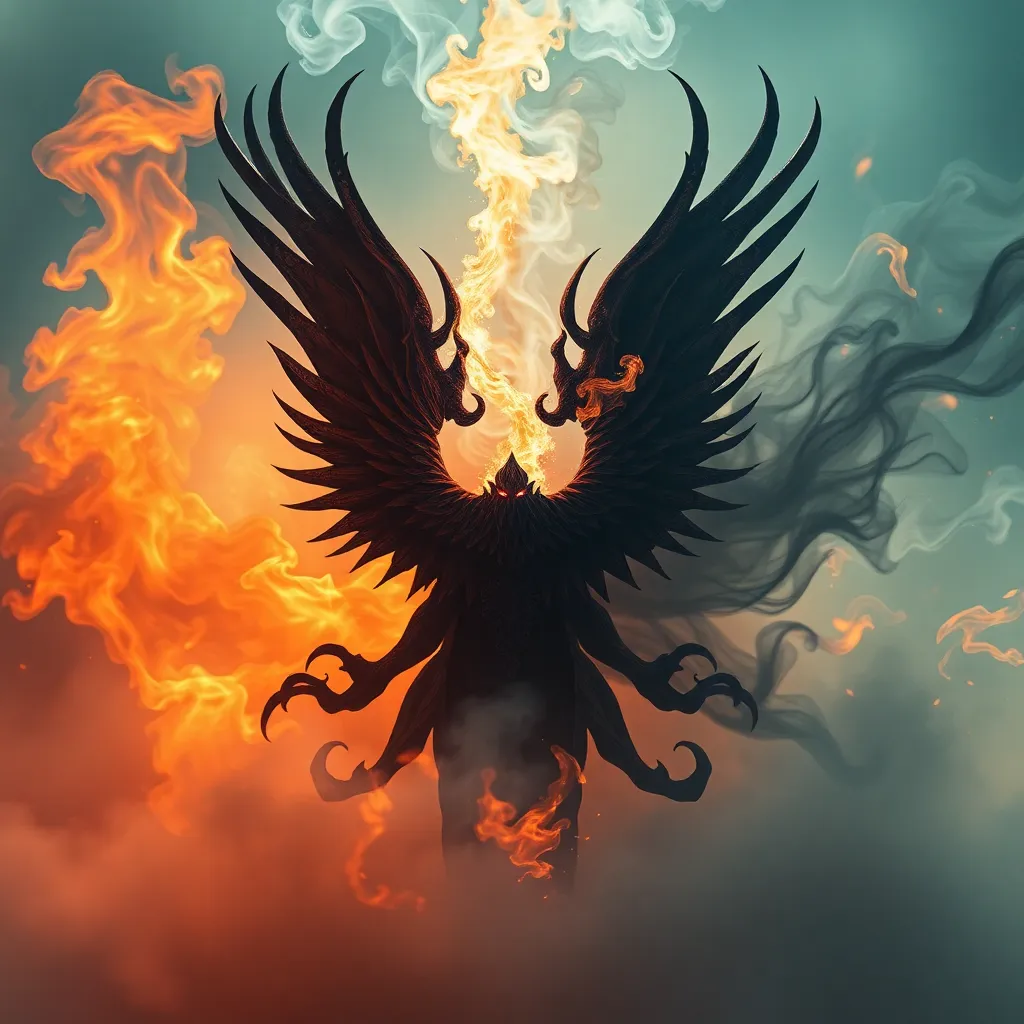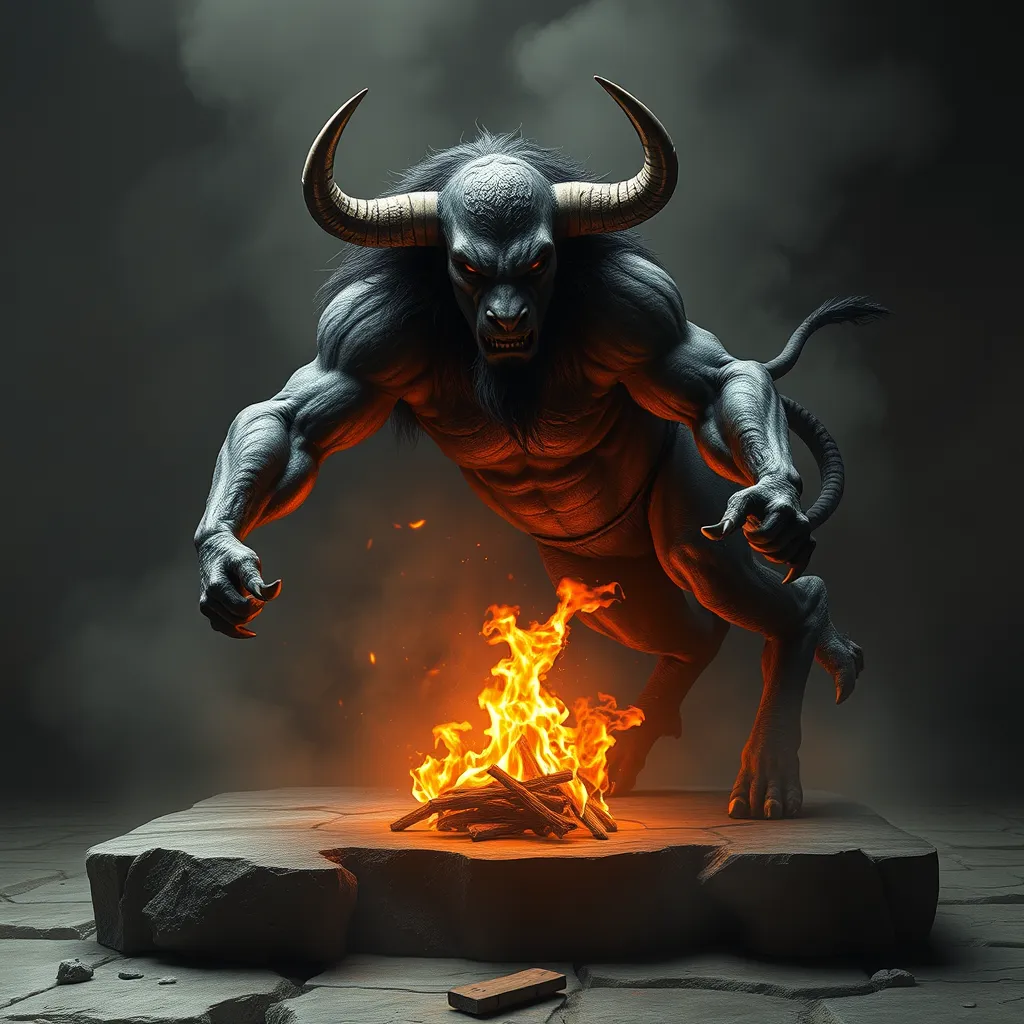From Jotunheim to Valhalla: The Giants of Norse Mythology
I. Introduction to Norse Mythology
Norse mythology is a rich tapestry of stories, beliefs, and characters that played a significant role in the spiritual and cultural life of the Scandinavian people. Central to this mythology is the complex cosmology that features various realms, beings, and deities.
Among these beings, the giants, known as Jotunn (singular: Jotun), hold a significant place in the mythological framework. They are not merely adversaries of the gods but are integral to the very fabric of the cosmos, embodying chaos and natural forces.
This article aims to explore the origins, characteristics, and legacy of the giants in Norse mythology, shedding light on their multifaceted roles and their enduring impact on modern culture.
II. The Origins of the Giants
The giants of Norse mythology trace their origins back to the primordial void known as Ginnungagap. In this void, the first giant, Ymir, emerged, marking the beginning of the cosmic order.
A. Creation myths involving giants
In the creation myths, Ymir was born from the interaction of the cold rivers of Niflheim and the heat of Muspelheim. From his body, the world was formed after he was slain by the gods Odin, Vili, and Ve. This act of creation not only established the land but also gave rise to the first humans.
B. The primordial giant Ymir and the formation of the world
Ymir’s body was used to create the earth, with his blood forming the oceans, his bones becoming mountains, and his skull creating the sky. This myth highlights the giants’ role as both creators and destroyers in the Norse cosmos.
C. The role of giants in the Nine Realms
The giants inhabit various realms, primarily Jotunheim, and are often in opposition to the realms of the gods. Their existence is a vital part of the Nine Realms, which include Asgard (home of the Aesir gods), Vanaheim (home of the Vanir gods), and Midgard (the world of humans).
III. The Realm of Jotunheim
Jotunheim is the realm of the giants, a harsh and wild land that contrasts sharply with Asgard’s order and beauty.
A. Description and significance of Jotunheim
Jotunheim is depicted as a rugged landscape filled with mountains, forests, and rivers. It is often associated with chaos, untamed nature, and the raw power of the earth.
B. The landscape and habitats of the giants
- Jotunheim’s terrain includes towering mountains and deep valleys.
- The giants often reside in massive stone halls or within the natural landscape.
- Its environment is wild and inhospitable, reflecting the chaotic nature of its inhabitants.
C. Key characteristics of Jotunheim as a mystical realm
Jotunheim embodies the elemental forces of nature, and its giants are often depicted as being attuned to these powers, representing the untamed aspects of the world that the gods seek to control.
IV. Notable Giants in Norse Mythology
Several giants stand out in Norse mythology, each contributing to the larger narrative in unique ways.
A. Loki: The trickster and his dual nature
Loki, perhaps the most famous giant, embodies complexity. As a shape-shifter and a trickster, he is both an ally and an adversary to the gods, illustrating the dual nature of giants as both creators and destroyers.
B. Angerboda: The mother of monsters
Angerboda is another significant giantess, known as the mother of three monstrous offspring: Fenrir the wolf, Jormungandr the Midgard Serpent, and Hel, the ruler of the underworld. Her children symbolize the chaos that the gods must confront.
C. Hrungnir and other significant giants in tales
Hrungnir, known for his strength and arrogance, challenges the gods and ultimately meets his end at the hands of Thor, highlighting the constant conflict between gods and giants.
V. The Giants’ Relationship with the Aesir and Vanir
The relationship between the giants and the gods is fraught with tension, characterized by both conflict and cooperation.
A. Conflicts and alliances between gods and giants
Many tales recount battles between gods and giants, showcasing the struggle for power and control over the cosmos. However, there are also alliances formed through marriage and mutual interests.
B. Examples of marriages and offspring
- Odin’s marriage to Frigg, a goddess of destiny, can be seen as a counterbalance to the chaos represented by the giants.
- Thor’s marriage to Sif and the relationships between gods and giantesses often result in offspring that embody traits of both lineages.
C. The impact of these relationships on the mythology
These interactions highlight the interconnectedness of the gods and giants, suggesting that chaos and order are two sides of the same coin in the Norse worldview.
VI. The Giants in Norse Cosmology: Chaos vs. Order
The giants symbolize chaos, challenging the order established by the gods.
A. The role of giants as forces of chaos
In many stories, giants embody natural disasters, storms, and other chaotic elements that disrupt the stability of the cosmos.
B. The balance between giants and gods
The ongoing struggle between gods and giants reflects a deeper philosophical narrative about balance in the universe, where both forces are necessary for the cycle of life and death.
C. The significance of Ragnarok in their narrative
Ragnarok, the prophesied end of the world, is marked by the giants’ resurgence as they rise against the gods, culminating in a final battle that signifies the cyclical nature of existence.
VII. The Legacy of Giants in Modern Culture
The giants of Norse mythology have left an indelible mark on modern culture, inspiring countless works of literature, film, and art.
A. Representation of giants in literature and media
From J.R.R. Tolkien’s works to Marvel’s cinematic universe, giants have been portrayed as both antagonists and complex characters, reflecting their multifaceted nature in mythology.
B. Influence on modern fantasy and popular culture
The archetype of the giant as a formidable being continues to influence fantasy genres, where they are often depicted as powerful, sometimes misunderstood creatures.
C. The enduring fascination with Norse giants
The giants’ ability to embody both chaos and creativity ensures their relevance in contemporary storytelling, resonating with audiences who seek to explore the complexities of existence.
VIII. Conclusion
In conclusion, the giants of Norse mythology are vital figures that embody the duality of chaos and order. Their origins, conflicts, and relationships with the gods illustrate a complex narrative that speaks to the human experience.
Their legacy continues to thrive in modern culture, reminding us of the enduring power of these ancient myths. As we reflect on their significance, we recognize that the giants are not merely adversaries but are also progenitors of life, representing the intricate dance between creation and destruction that defines the universe.



